-
Posts
12444 -
Joined
-
Last visited
-
Days Won
554
Content Type
Profiles
Forums
Events
Everything posted by Fiery
-
Thank you for your suggestion.
-

Stress test for L3 Cache (L3 only) would be nice.
Fiery replied to Droiyan7's topic in Brainstorming
The Cache subtest of the AIDA64 System Stability Test stresses all cache levels.- 1 reply
-
- stability test
- ryzen
-
(and 2 more)
Tagged with:
-
On most Android devices it's not possible to downgrade. I'm not 100% sure if that's the case for your particular device though.
-
Yes, we're certain that both thermal readings are valid for your PSU. You can try to put some load on the system to heat the PSU up, and check whether both thermal readings react to the PSU heat-up.
-

fixed: AMD Radeon VII support [added in AIDA64 v6.00]
Fiery replied to Raiderman's topic in Hardware monitoring
Yes, we're already working on it. AMD has changed a lot in Radeon VII about thermal monitoring, so we need to update AIDA64 quite a bit to make it work with your video card. I will let you know in this topic once a new AIDA64 update is available for download. -

CPU Current Value disappears (Asus ROG Maximus XI Hero)
Fiery replied to tw33k's topic in Bug reports
What motherboard do you have, and what version of AIDA64 are you using? -
Is your video card active cooled? In other words, does it have a cooling fan installed?
-

SensorPanel Item disappears/reappears (ASRock Z390 Taichi + Aquaero)
Fiery replied to Charles Strom's topic in Bug reports
1) The SSD temperature most likely disappears and resappears again because one of the hard disks or SSDs you've got in your system goes to sleep (and wakes up after a while), which may cause AIDA64 to re-enumerate your storage devices. In which case the SSD may get a different drive index than in the previous state. Do you think you've got a storage device that goes to sleep sometimes? 2) As for Aquaero, please let me know what Aquaero model you've got. 3) Also let me know what version of AIDA64 are you using. -

PC crash immediately after launching AIDA64 (ASRock FM2A88X Extreme6+)
Fiery replied to Steph's topic in Bug reports
I'm glad the advice helped -

PC crash immediately after launching AIDA64 (ASRock FM2A88X Extreme6+)
Fiery replied to Steph's topic in Bug reports
Thank you for your feedback. It means the RAID driver that's currently installed for your SATA controller gets confused about one of the RAID enumeration methods that AIDA64 issues at startup. If your system doesn't have a RAID array defined, you can leave the RAID enumeration module disabled. -
Thank you! I've sent you a private message about this issue.
-
Notebooks can be hard nuts to crack about fan RPM monitoring. Let's try this first: please right-click on the bottom status bar of AIDA64 main window --> Sensor Debug --> ISA Sensor Dump. Copy-paste the full results into this topic, or attach the results as a TXT file to your post. You may need to enable status bar in AIDA64 / main menu / View first. Thanks, Fiery
-

GPU Less sensor, wrong index (P106 mining adapter issue)
Fiery replied to xixou's topic in Bug reports
I'm not sure if I understand the current state of the issue, so please clarify: after enabling the GPU waking option, all your GPUs are picked up by the PCI device enumerator of AIDA64, but you still don't have all 3 GPUs listed properly on the Display / GPU page of AIDA64? -

PC crash immediately after launching AIDA64 (ASRock FM2A88X Extreme6+)
Fiery replied to Steph's topic in Bug reports
Try to navigate to the installation folder of AIDA64. If you can already find a file called AIDA64.INI there, open it using Notepad, find the following 2 lines in there: LowLevelRAIDEnum=1 LowLevelRAIDSMART=1 And change those lines to: LowLevelRAIDEnum=0 LowLevelRAIDSMART=0 ------------------ If you don't yet have that file there, create a new, empty text file called AIDA64.INI there, and add the following lines to the file using Notepad: [Generic] LowLevelRAIDEnum=0 LowLevelRAIDSMART=0 -
Go to AIDA64 / main menu / Help / Command-line Options to see the list of command-line arguments AIDA64 supports. Please note that only AIDA64 Business, AIDA64 Engineer and AIDA64 Network Audit support command-line driven automation.
-
Try to post that question to StackOverflow. This forum is dedicated to supporting our software AIDA64.
-
The new kernel driver of AIDA64 v5.99.4960 Beta is not working on your system. It's most likely because the old kernel driver got stuck in the driver cache of your Windows installation. Try to remove all AIDA64 versions from your system, restart Windows and download + extract the latest AIDA64 beta build.
-

fixed: Missing sensor items (Asus Maximus XI Apex)
Fiery replied to Feklar's topic in Hardware monitoring
Thank you for your feedback! -

fixed: CPU2 Fan missing (ASRock H270M Performance)
Fiery replied to fadsarmy's topic in Hardware monitoring
On some motherboards the Vcore rail indicates the CPU VID voltage, that's normal. -

First AIDA64 Stability Test of my life, opinions on my temperatures?
Fiery replied to red's topic in Hardware monitoring
I can't see any critical or too high values there. But please avoid posting a single issue into multiple topics. I've removed your other 2 topics with the same question. -
There's no need to update AIDA64. If your computer cannot stand the very demanding task of the AIDA64 FPU stress test, it's not because there's anything wrong with AIDA64
-
If you're afraid of the system burning up or catching fire, then no, you shouldn't leave it unattended when a demanding task is running.
-
It is missing usually because the user who's launched AIDA64 has no administrator privileges.
-
If your CPU or RAM is overclocked, then I'd try to use their factory default setting and see if it helps. If not, then try to lower the memory clock frequency and ease up on the memory timings (use higher timings). Most importantly, set the RAM to Command Rate (tCR or tCMD) 2T instead of 1T.

